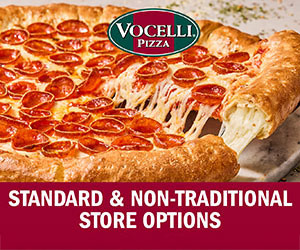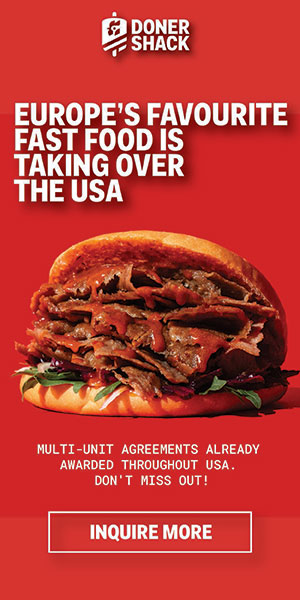It's A Grind Brewing Up A No. 2 Plan
(Monday, May 08, 2006) - Marty Cox's ultimate goal is second place, but don't knock him for his lack of ambition.
A No. 2 ranking in his industry would be monumental, considering that would put him behind one of the world's largest, best-known and fastest-growing brands: Starbucks.
"We hope to become the No. 2 coffeehouse in the market," said Cox, a 40-year-old Long Beach resident and owner of It's a Grind Coffee House, who spent the first part of his career as an outside sales executive. "We should be the second largest in the next four to five years."
It's A Grind is cranking out a new store at a pace of about one every four days.
The Long Beach franchisor is in more than a dozen states and is nearing 100 locations, not bad for a company that opened its first store in Long Beach in 1994 and expanded to five locations within the city in 2000.
"We are at about 90 stores open now," Cox said, adding that the company has signed agreements with 180 franchisees representing 290 stores, and "those are already committed stores. By end of this year we'll be at 135, 140. In 2007, we should open another 75 locations."
Starbucks has 10,801 stores, slowing to an average of roughly 1.5 store openings per day in 2005 from a peak a few years earlier of four stores per day.
The up-and-coming It's A Grind is making a buzz across the country, thanks largely to the way it does business: Most of its growth is from franchises to individuals and companies for a fee of $36,000 plus 6 percent of gross.
Where the stock market gave 35-year-old Starbucks Corp. its jump-start, other big coffee chains have growth through corporate earnings or franchising, mostly a combination of the two, said Ted Lingle, with the Long Beach-based Specialty Coffee Association.
Many mix their chains with company-owned and franchise operations, such as Los Angeles-based Coffee Bean & Tea Leaf, which has 315 stores.
Minneapolis-based Caribou, which is traded on the Nasdaq under CBOU, has more than 350 stores and is primarily privately owned and offers limited franchise opportunities. Conversely, the Midwestern Coffee Beanery chain is largely franchise driven, and it has more than 200 locations.
The Northern California-based Pete's Coffee & Tea chain has 113 stores. Pete's, which is celebrating is 40-year anniversary, is primarily company-owned and owes its growth to corporate earnings.
"I don't think there is a clear No. 2," said Lingle, who noted that the chains stack up differently based on store numbers, or based on sales.
The husband-and-wife team of Cox, a Long Beach native, and Louise Montgomery opened the first store in 1994. By 2000, the couple had five cafes in the Long Beach area, each generating about $500,000 annually. That's when Cox hooked up with business partner Steve Shoeman, who helped develop the franchise concept with the formation of IAG Coffee Franchise LLC.
Cox credits the chain's success partly to high customer service standards and to blues and jazz motifs that give stores their atmosphere. But It's A Grind's success can be largely attributed to a business model that's more commonly associated with fast food.
Cox charges store owners a one-time franchise fee plus a continuing royalty fee, and that has given them an advantage over most other coffee chains, which tend to keep store ownership in the corporate family.
The advantage is those who run the store directly profit from its success.
"With the cash comes the manager of the cash," Lingle said. "No one takes care of the money better than the owner of the money."
But that same advantage can also be a disadvantage, as not all franchise owners are created equal meaning one It's A Grind may have standards of quality that are better, or worse, than the next, Lingle added.
"It's a danger that any franchisor faces, that they will not be able to keep the franchisees committed to the quality of the program," Lingle said.
With so many chains, is growth sustainable? And where, if ever, will it stop?
A good saturation point is one coffee house for every 35,000 people, Lingle said, adding, "There's still lots of opportunity out there."
The market is being helped by a crossover between people who consume the fancier espresso-based beverages and those who consume regular coffee. In other words, those who go to Dunkin' Donuts or 7-Eleven to get their affordable fuel can also be found sucking down a Starbucks caramel macchiato. Conversely, some gourmet coffee lovers go for the cheaper quick fix once in a while.
"We feel that the reason the total coffee market is growing now is because of this crossover," Lingle said.
Cox is taking the success in stride, and as for any future plans to take his company public, he was a tad illusive.
He answered "No comment" to questions about going public or acquiring other coffee brands, though he admits keeping an eye on potential acquisitions and that he has had offers from corporate interests.
"I have not heard from Warren Buffett," he said, declining to comment further.
As for his view of the market growth, Cox said:
"It's nowhere near saturated. We can put a coffee house on every corner."
The question is: Can Cox reach the goal of becoming No. 2?
Lingle doesn't see why not.
"It's a very strong chain," Lingle said. "You have every indication that they can execute their business plan."
###
| ADVERTISE | SPONSORED CONTENT |
Franchise News
By Type
- Expansions & Growth
- Financial & Earnings Claims
- Mergers & Acquisitions
- Personnel Changes
- Conferences & Events
- Product Announcements
- Media Coverage
- Strategic Alliances
By Sector
| ADVERTISE | SPONSORED CONTENT |



 The franchise opportunities listed above are not related to or endorsed by Franchising.com or Franchise Update Media Group. We are not engaged in, supporting, or endorsing any specific franchise, business opportunity, company or individual. No statement in this site is to be construed as a recommendation. We encourage prospective franchise buyers to perform extensive due diligence when considering a franchise opportunity.
The franchise opportunities listed above are not related to or endorsed by Franchising.com or Franchise Update Media Group. We are not engaged in, supporting, or endorsing any specific franchise, business opportunity, company or individual. No statement in this site is to be construed as a recommendation. We encourage prospective franchise buyers to perform extensive due diligence when considering a franchise opportunity.